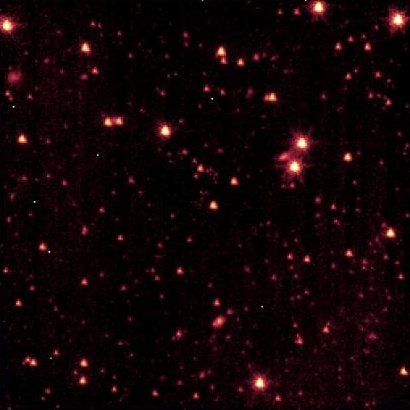Just one week after NASA’s Space Infrared Telescope Facility (SIRTF) launched, it has already started checking out the infrared universe. The initial results — though not perfect because the telescope has yet to fully cool — demonstrate SIRTF’s sensitivity and are making astronomers giddy with anticipation.
“These first images have exceeded our expectations,” reports SIRTF project scientist Michael Werner. “We can’t wait to see the images and spectra we’ll get once the telescope is cooled down and instruments are working at full capacity.”
Launched from Cape Canaveral, Florida, on August 25, SIRTF is now drifting away from Earth, establishing an orbit that will have the spacecraft follow us around the sun. On August 29, the telescope’s dust cover was ejected, and its aperture door opened the following day. Meanwhile, mission controllers turned on two of the observatory’s instruments: the Infrared Array Camera and the Multi-band Imaging Photometer for SIRTF. During its start-up, the camera captured a set of images showing a field of stars and galaxies glowing brightly in the infrared.
The preliminary observations are part of a two-month checkout period. SIRTF’s third instrument, the infrared spectrograph, will be turned on later this month. All other systems are operating normally so far.
To detect infrared radiation from cosmic sources, SIRTF must be extremely cold. Over the next month, the telescope will cool to just five degrees Celsius above absolute zero. About 35 days after launch, the telescope’s mirror will be focused in preparation for the first science observations, which will happen during a month-long science verification stage following the operational checkout.
Throughout SIRTF’s 2.5- to 5-year mission, the space telescope will study the infrared radiation, or heat, given off by objects such as stars, galaxies, and even planets. Its forte will be observing bodies that are too far, too dim, or too hidden by dust to be studied at visible wavelengths










